Plates 3.12-3.17: Eleanor Crosses (Original Explanatory Account)
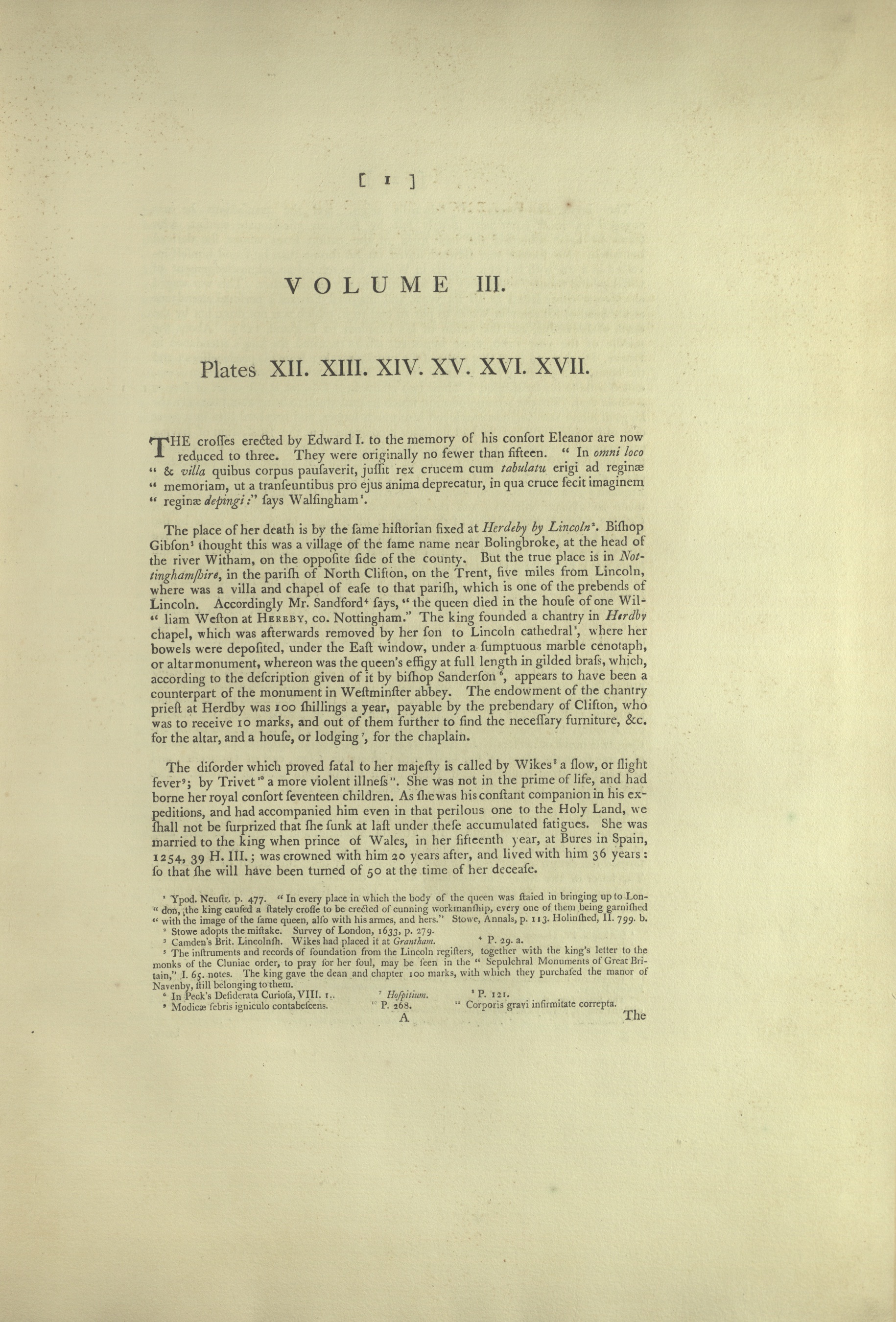
[ (Page) 1 ]
VOLUME III.
Plates XII. XIII. XIV. XV. XVI. XVII.
The crosses erected by Edward I. to the memory of his consort Eleanor are now reduced to three. They were originally no fewer than fifteen. “In omni loco & villa quibus corpus pausaverit, jussit rex crucem cum tabulatu erigi ad reginae memoriam, ut a transeuntibus pro ejus anima deprecatur, in qua cruce fecit imaginem reginae depingi:” [see end of document for translation] says Walsingham1.
Read more/less…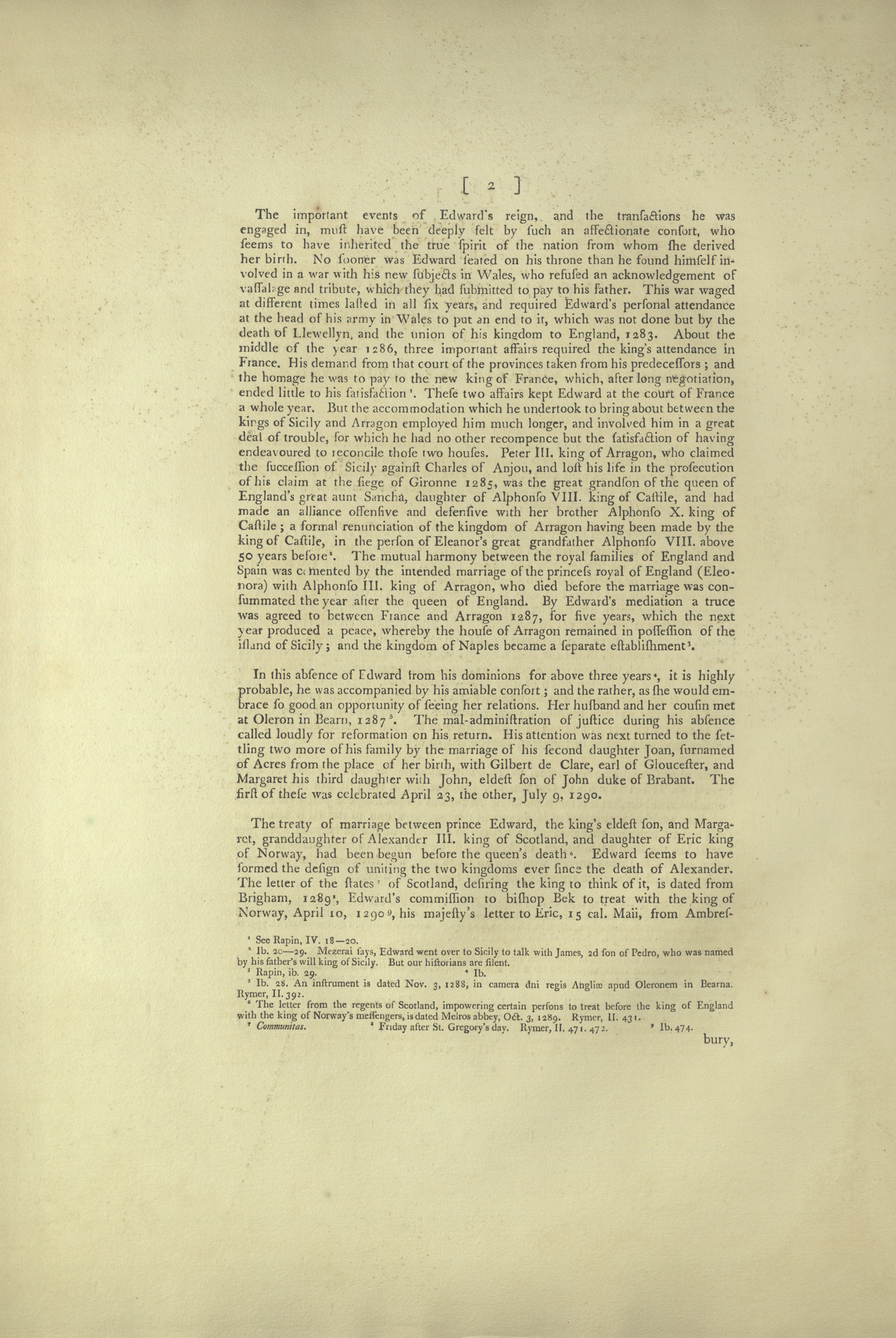
[ (Page) 2 ]
The important events of Edward’s reign, and the transactions he was engaged in, must have been deeply felt by such an affectionate consort, who seems to have inherited the true spirit of the nation from whom she derived her birth. No sooner was Edward seated on his throne than he found himself involved in a war with his new subjects in Wales, who refused an acknowledgement of vassalage and tribute, which they had submitted to pay his father. This war waged at different times lasted in all six years, and required Edward’s personal attendance at the head of his army in Wales to put an end to it, which was not done but by the death of Llewellyn, and the union of his kingdom to England, 1283.
Read more/less…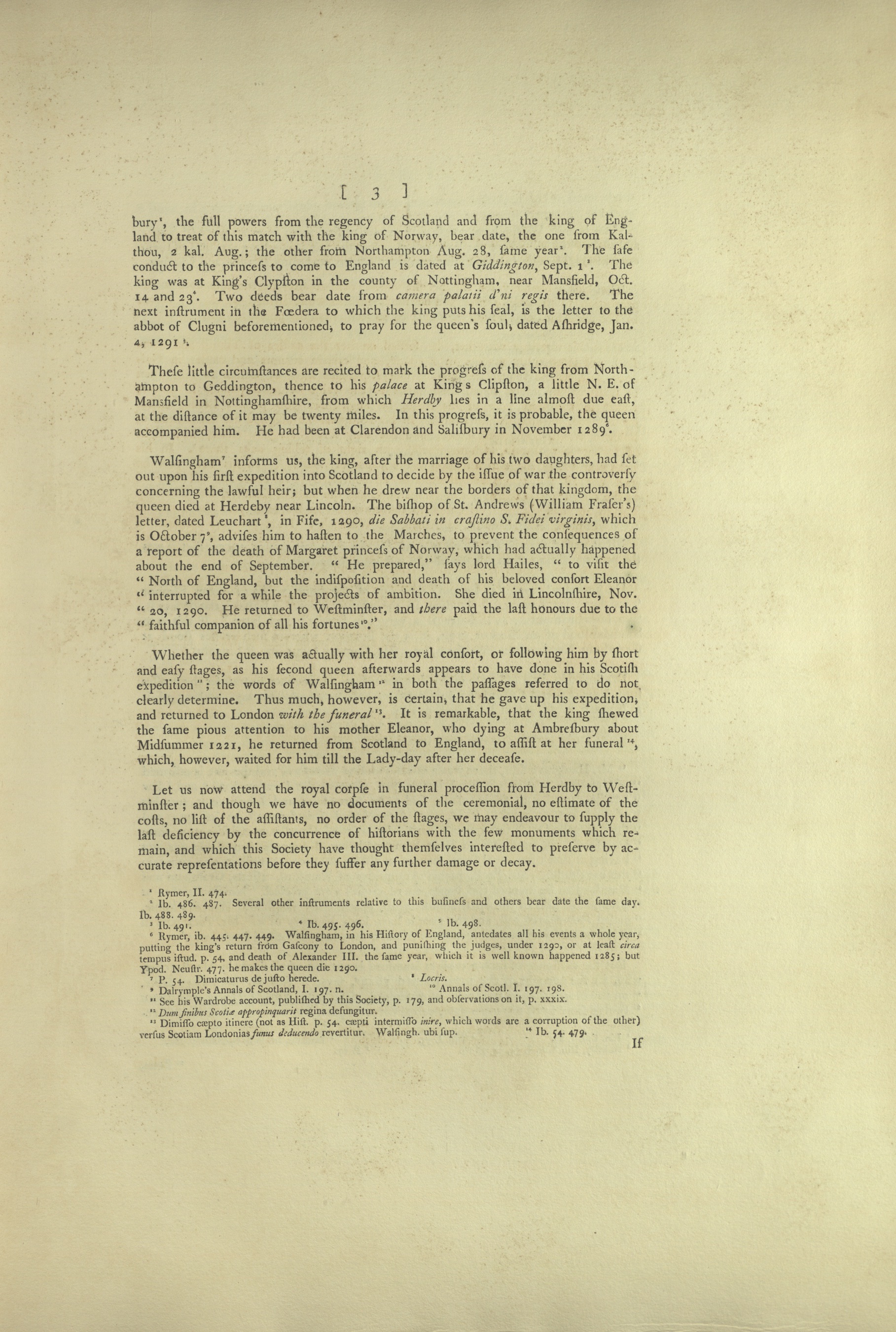
[ (Page) 3 ]
[Ambres-]bury1, the full powers from the regency of Scotland and from the king of England to treat of this match with the king of Norway, bear date, the one from Kalthou, 2 kal. Aug.; the other from Northampton Aug. 28, same year2. The safe conduct to the princess to come to England is dated at Giddington, Sept. 13. The king was at King’s Clypston in the county of Nottingham, near Mansfield, Oct. 14 and 234. Two deeds bear date from camera palatii d’ni regis [translation to be completed] there. The next instrument in the Foedera to which the king puts his seal, is the letter to the abbot of Clugni beforementioned, to pray for the queen’s soul, dated Ashridge, Jan 4, 12915.
Read more/less…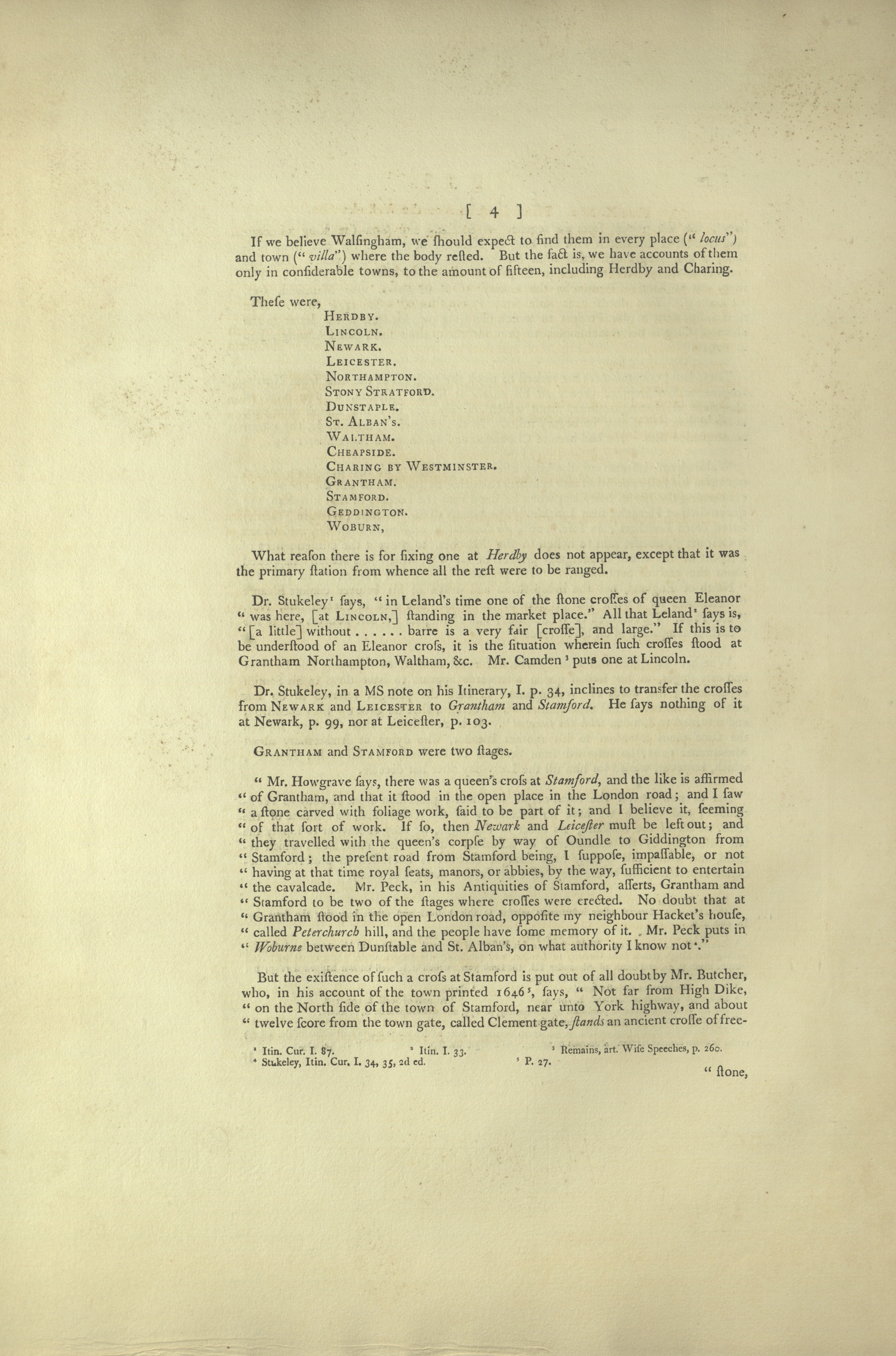
[ (Page) 4 ]
If we believe Walsingham, we should expect to find them in every place (“locus”) and town (“villa”) where the body rested. But the fact is, we have accounts of them only in considerable towns, to the amount of fifteen, including Herdby and Charing.
Read more/less…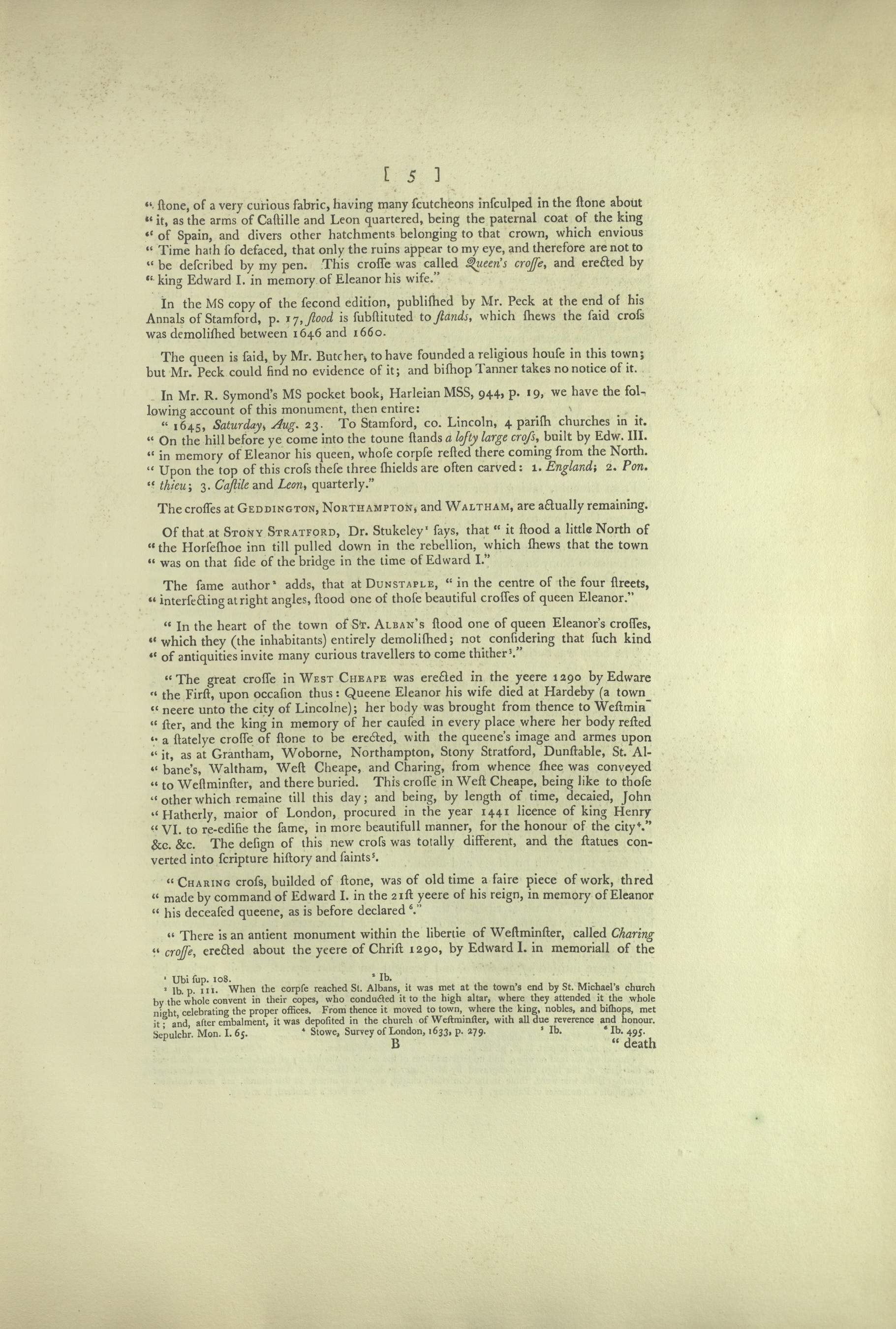
[ (Page) 5 ]
[free-]stone, of a very curious fabric, having many scutcheons insculped in the stone about it, as the arms of Castille and Leon quartered, being the paternal coat of the king of Spain, and divers other hatchments belonging to that crown, which envious Time hath so defaced, that only the ruins appear to my eye, and therefore are not to be described by my pen. This crosse was called Queen’s crosse, and erected by king Edward I. in memory of Eleanor his wife.”
Read more/less…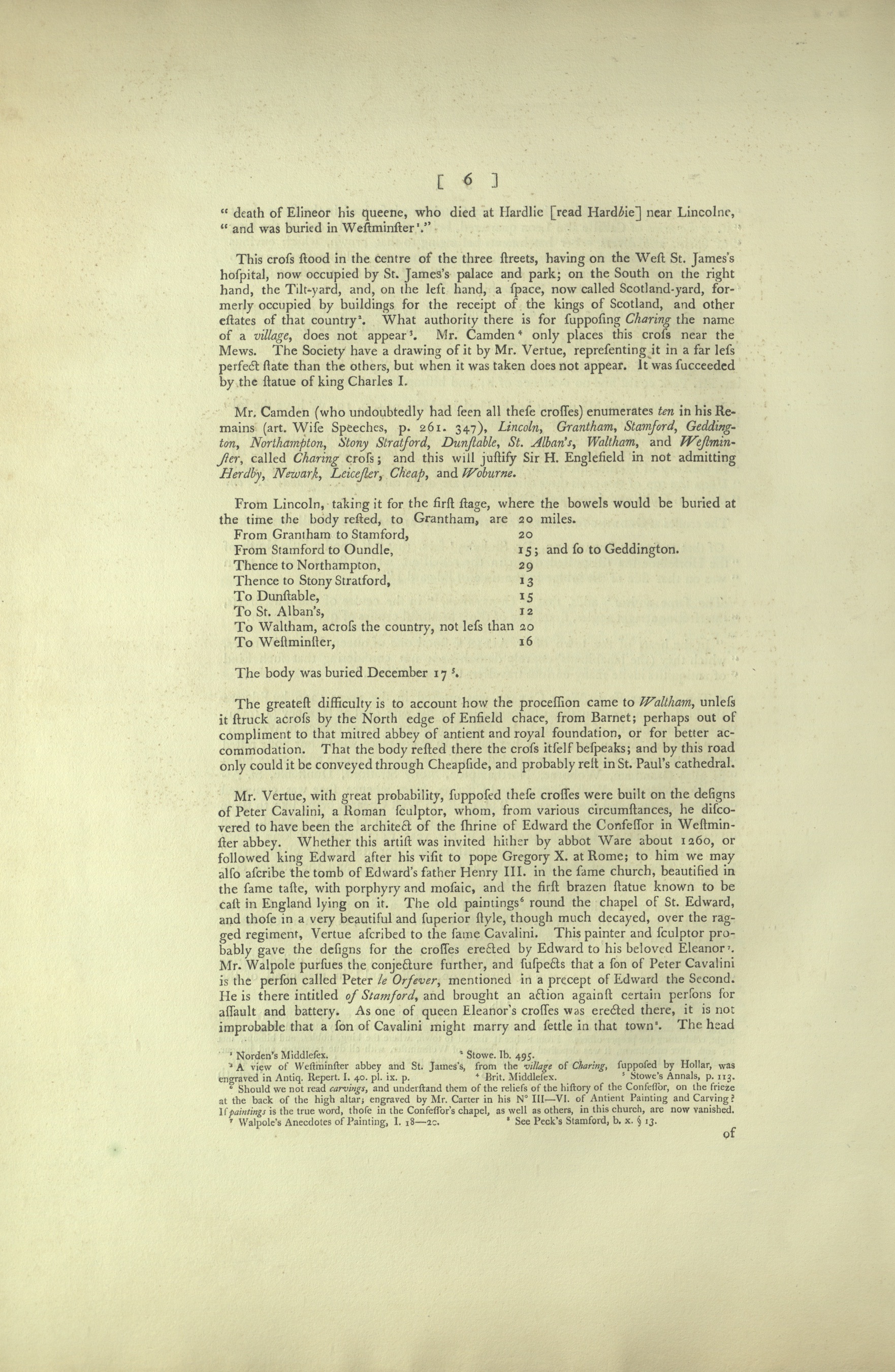
[ (Page) 6 ]
“death of Elineor his queene, who died at Hardlie [read Hardbie] near Lincolne, and was buried in Westminster1.”
This cross stood in the centre of the three streets, having on the West St. James’s hospital, now occupied by St. James’s palace and park; and on the South on the right hand, the Tilt-yard, and, on the left hand, a space, now called Scotland-yard, formerly occupied by buildings for the receipt of the kings of Scotland, and other estates of that country2.
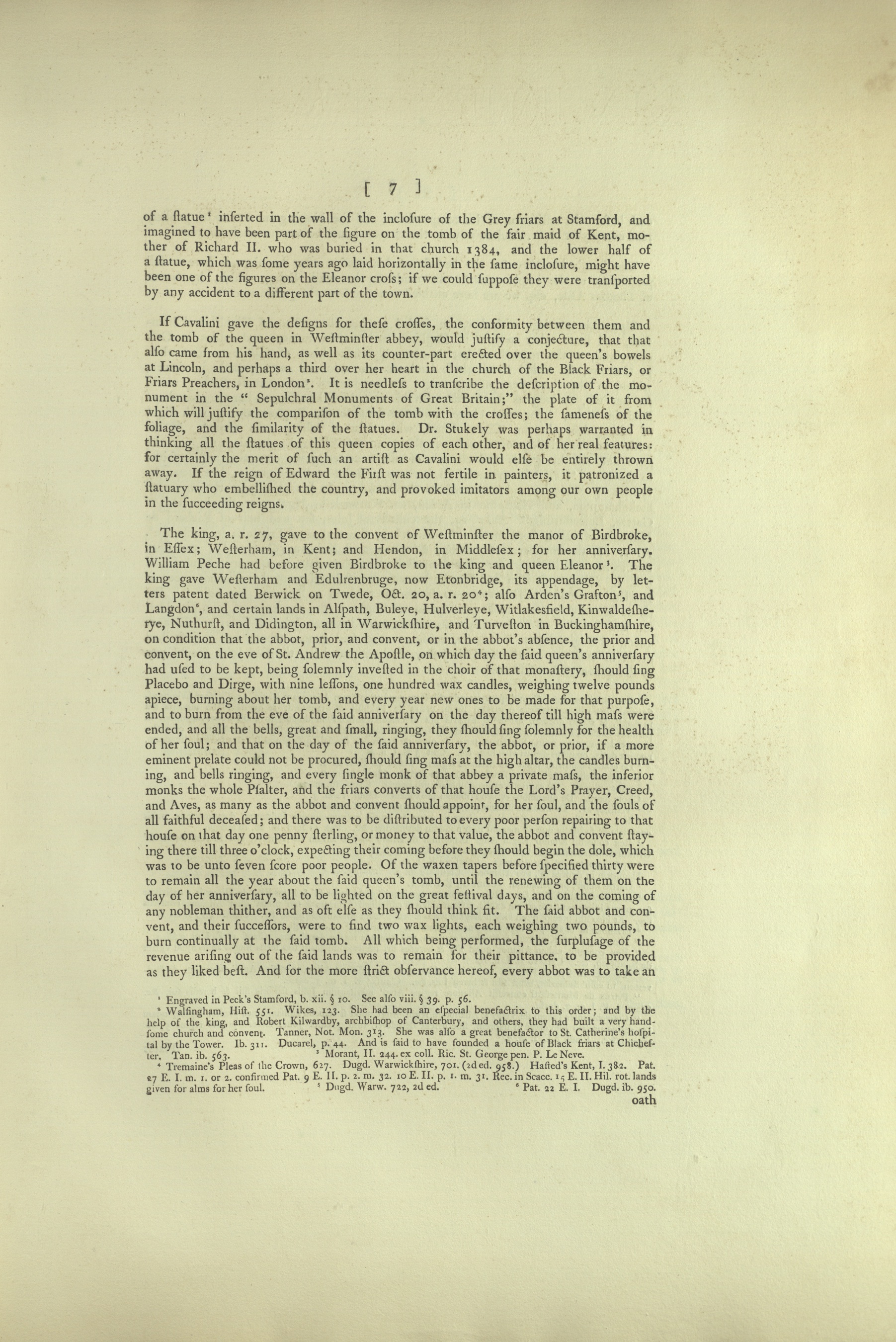
[ (Page) 7 ]
of a statue1 inserted in the wall of the inclosure of the Grey friars at Stamford, and imagined to have been part of the figure on the tomb of the fair maid of Kent, mother of Richard II. who was buried in that church 1384, and the lower half of a statue, which was some years ago laid horizontally in the same inclosure, might have been one of the figures on the Eleanor cross; if we could suppose they were transported by any accident to a different part of the town.
Read more/less…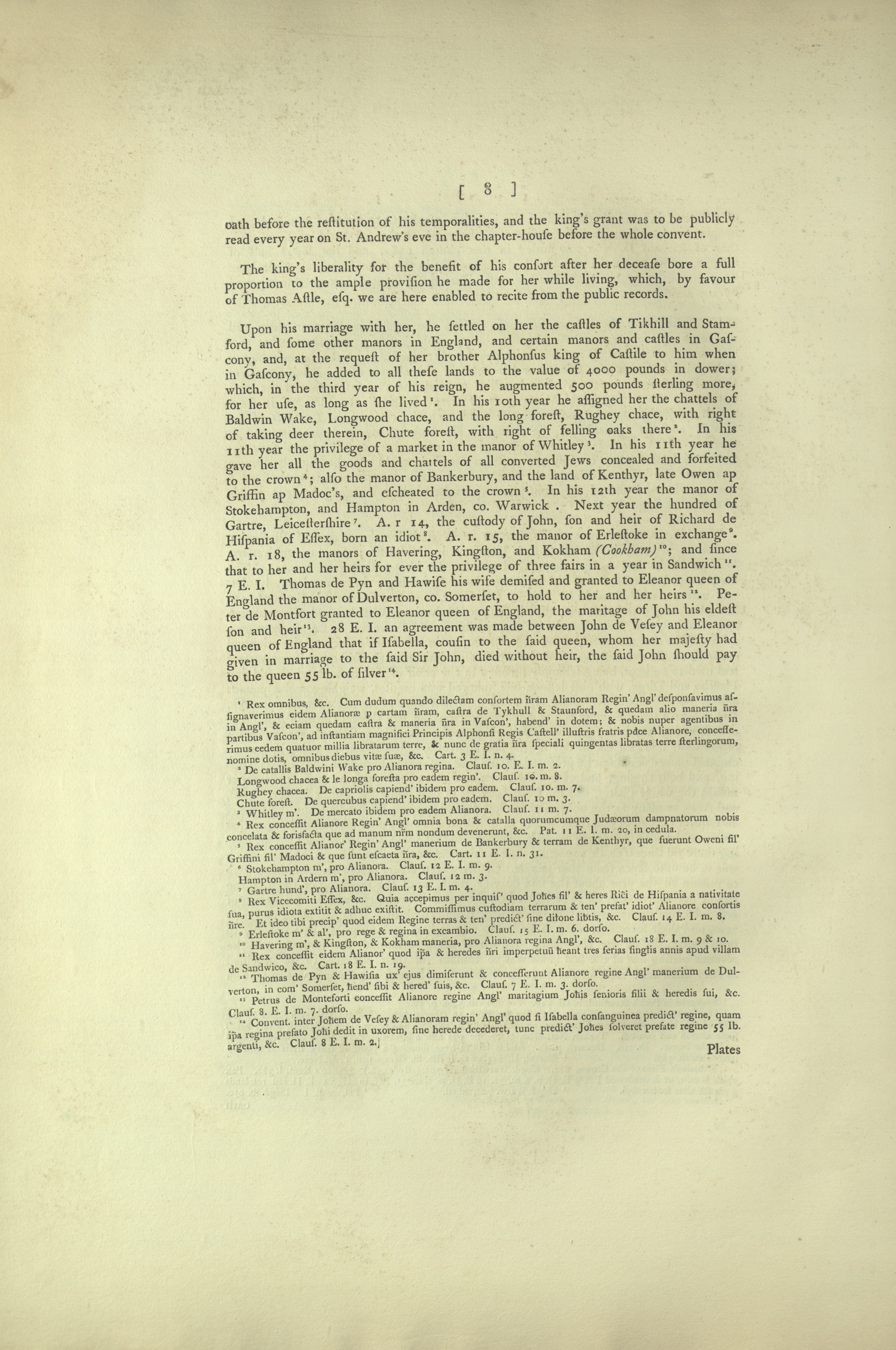
[ (Page) 8 ]
oath before the restitution of his temporalities, and the king’s grant was to be publicly read every year on St. Andrew’s eve in the chapter-house before the whole convent.
The king’s liberality for the benefit of his consort after her decease bore a full proportion to the ample provision he made for her while living, which, by favour of Thomas Astle, esq. we are here enabled to recite from the public records.
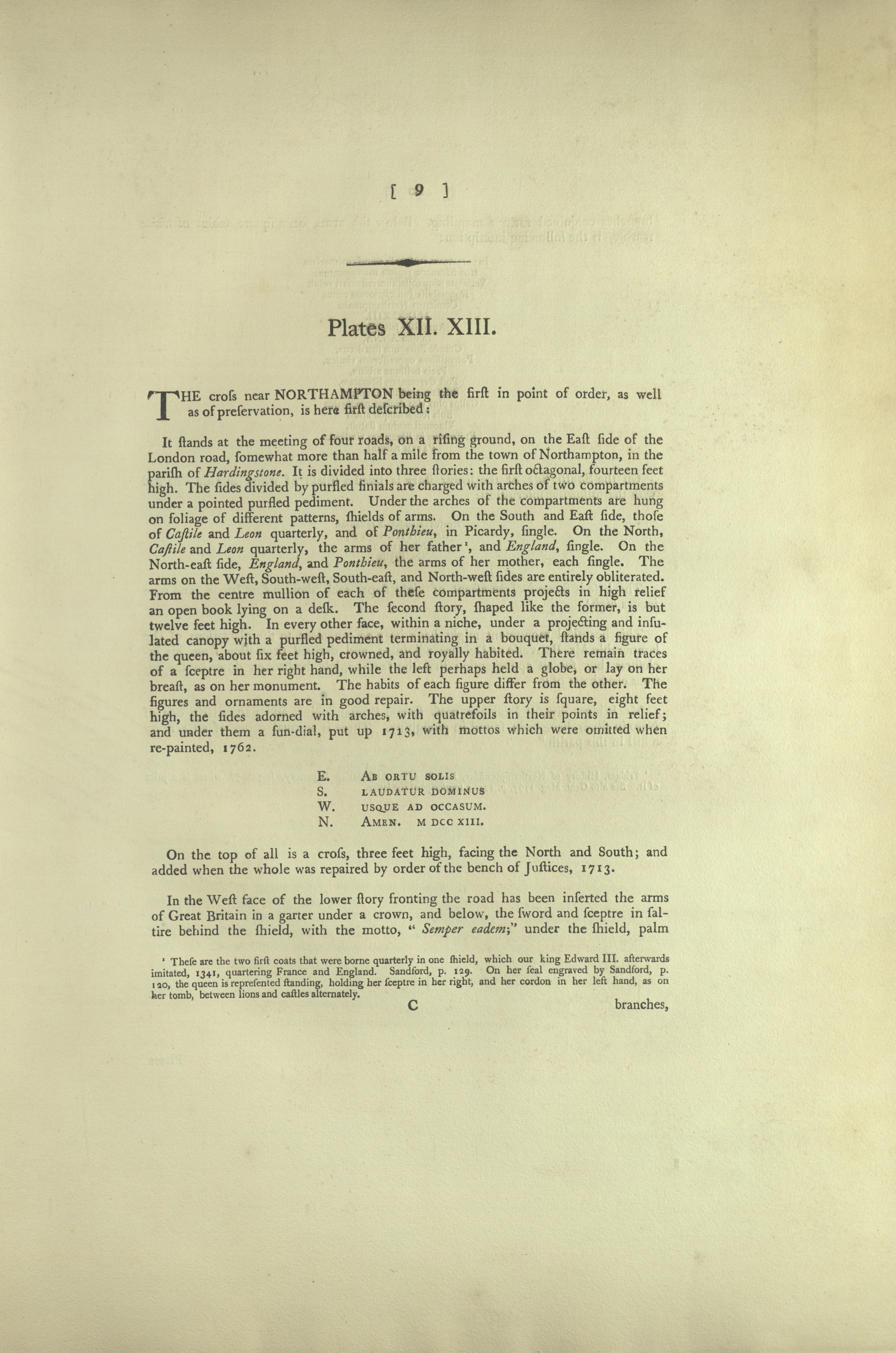
[ (Page) 9 ]
PLATES XII. XIII.
THE cross near NORTHAMPTON being the first in point of order, as well as of preservation, is here first described:
It stands at the meeting of four roads, on a rising ground, on the East side of the London road, somewhat more than half a mile from the town of Northampton, in the parish of Hardingstone. It is divided into three stories: the first octagonal, fourteen feet high.
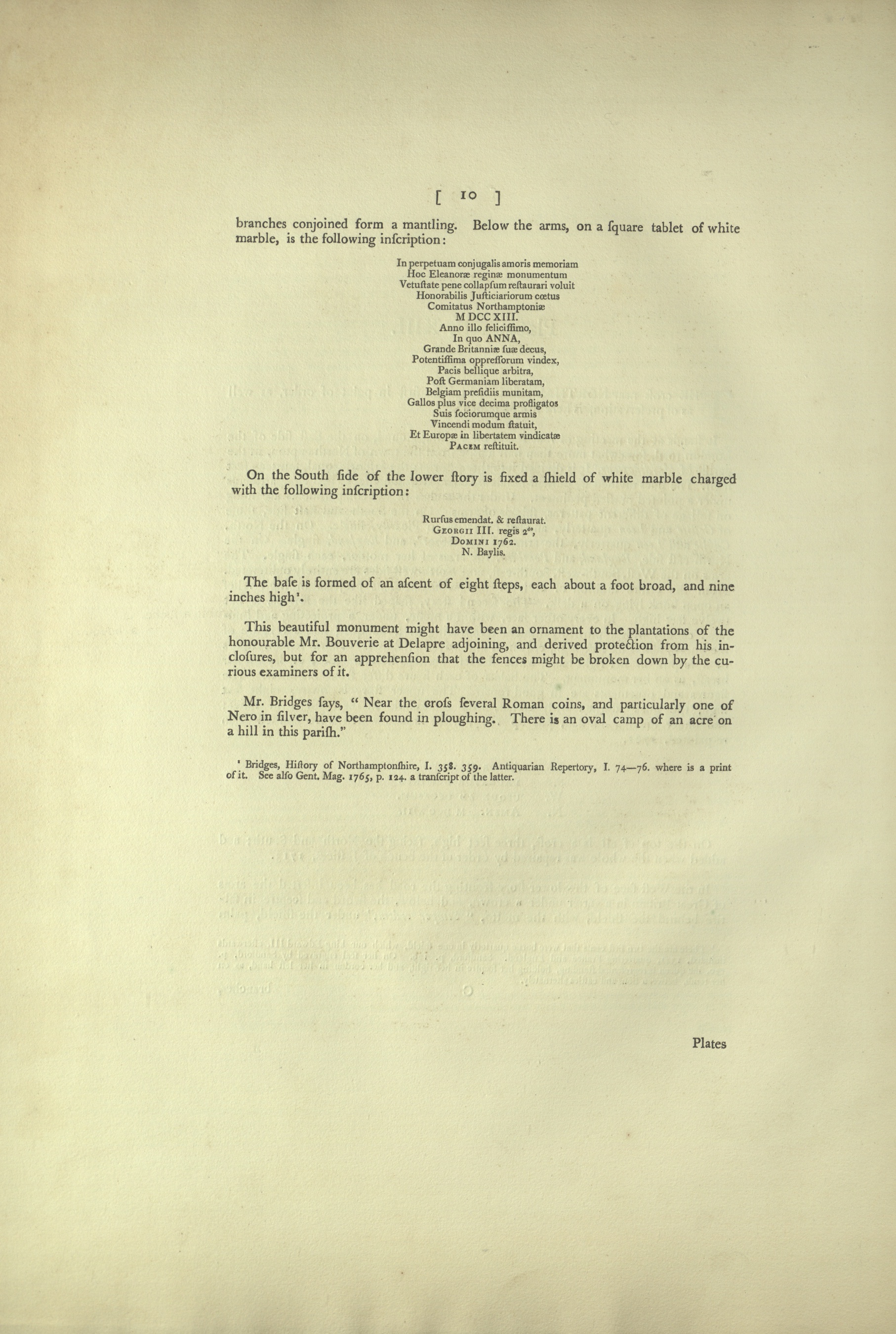
[ (Page) 10 ]
branches conjoined form a mantling. Below the arms, on a square tablet of white marble, is the following inscription:
In perpetuam conjugalis amoris memoriam
Hoc Eleanorae reginae monumentum
Vetustate pene collapsum restaurari voluit
Honorabilis Justiciariorum coetus
Comitatus Northamptoniae
M DCC XIII.
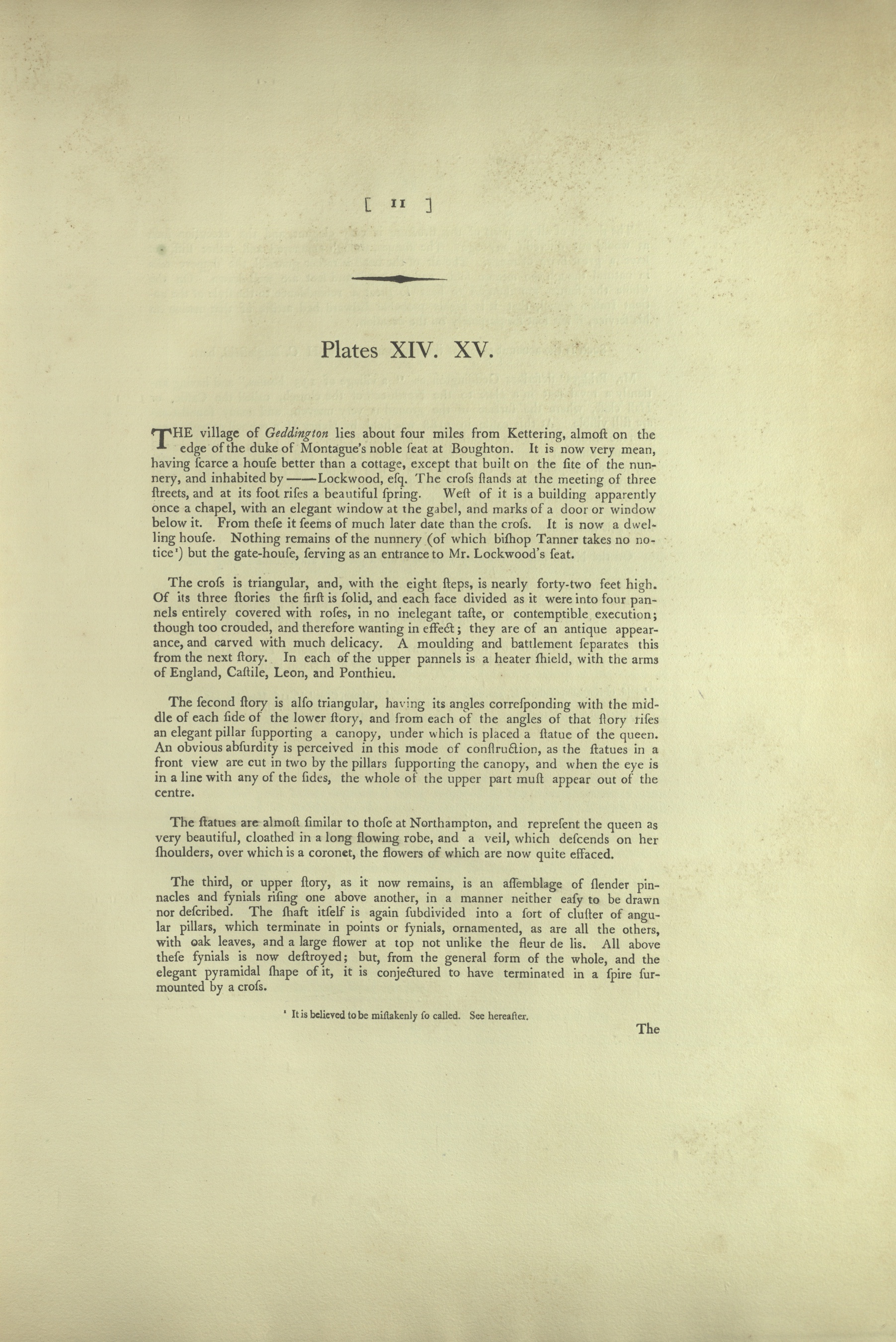
[ (Page) 11 ]
PLATES XIV. XV.
THE village of Geddington lies about four miles from Kettering, almost on the edge of the duke of Montague’s noble seat at Boughton. It is now very mean, having scarce a house better than a cottage, except that built on the site of the nunnery, and inhabited by —— Lockwood, esq. The cross stands at the meeting of three streets, and at its foot rises a beautiful spring.
Read more/less…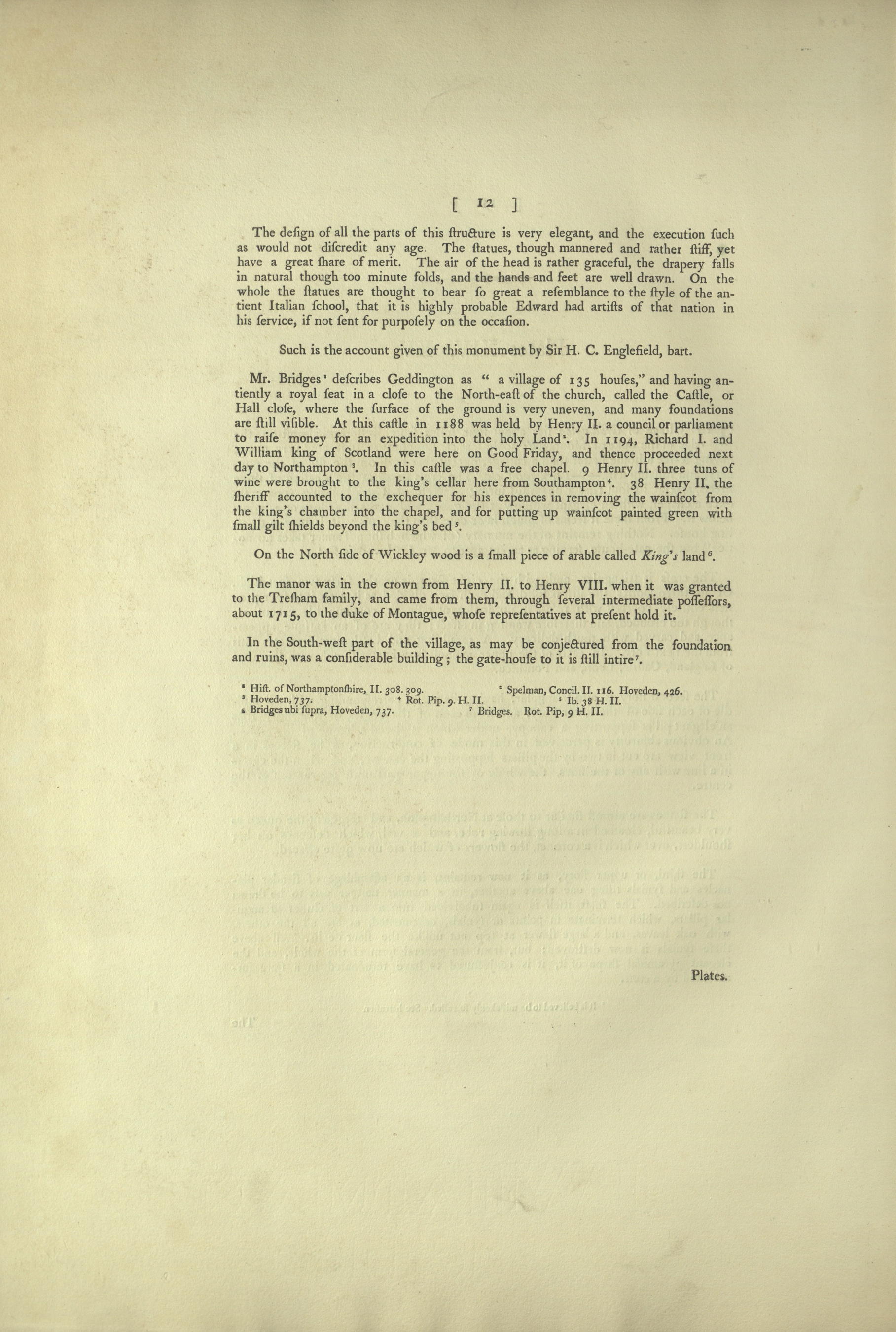
[ (Page) 12 ]
The design of all the parts of this structure is very elegant, and the execution such as would not discredit any age. The statues, though mannered and rather stiff, yet have a great share of merit. The air of the head is rather graceful, the drapery falls in natural though too minute folds, and the hands and feet are well drawn. On the whole the statues are thought to bear so great a resemblance to the style of the antient Italian school, that it is highly probably Edward had artists of that nation in his service, if not sent for purposely on the occasion.
Read more/less…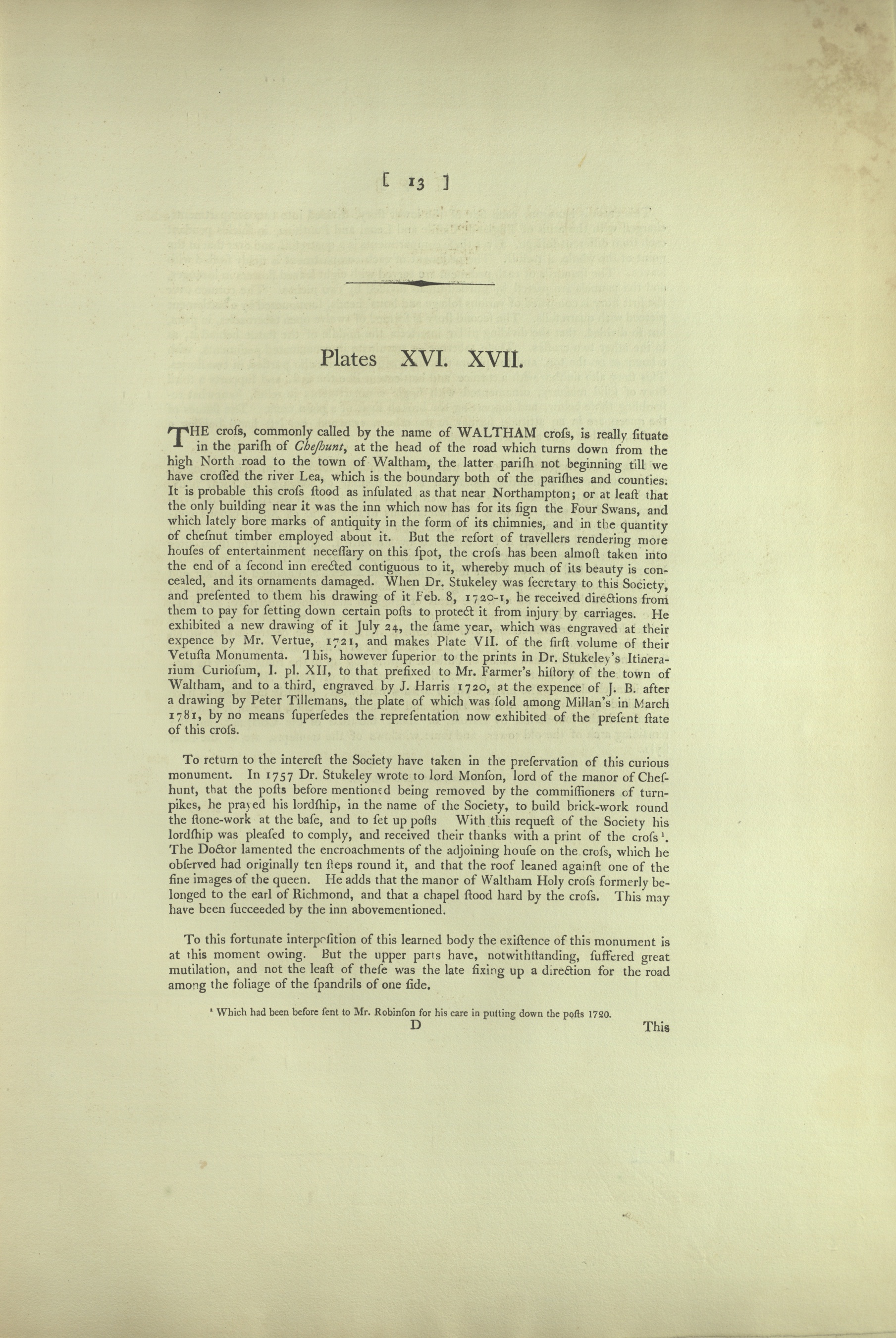
[ (Page) 13 ]
PLATES XVI. XVII.
THE cross, commonly called by the name of WALTHAM cross, is really situate in the parish of Cheshunt, at the head of the road which turns down from the high North road to the town of Waltham, the latter parish not beginning till we have crossed the river Lea, which is the boundary both of the parishes and counties. It is probable this cross stood as insulated as that near Northampton; or at least that the only building near it was the inn which now has for its sign the Four Swans, and which lately bore marks of antiquity in the form of its chimnies, and in the quantity of chesnut timber employed about it.
Read more/less…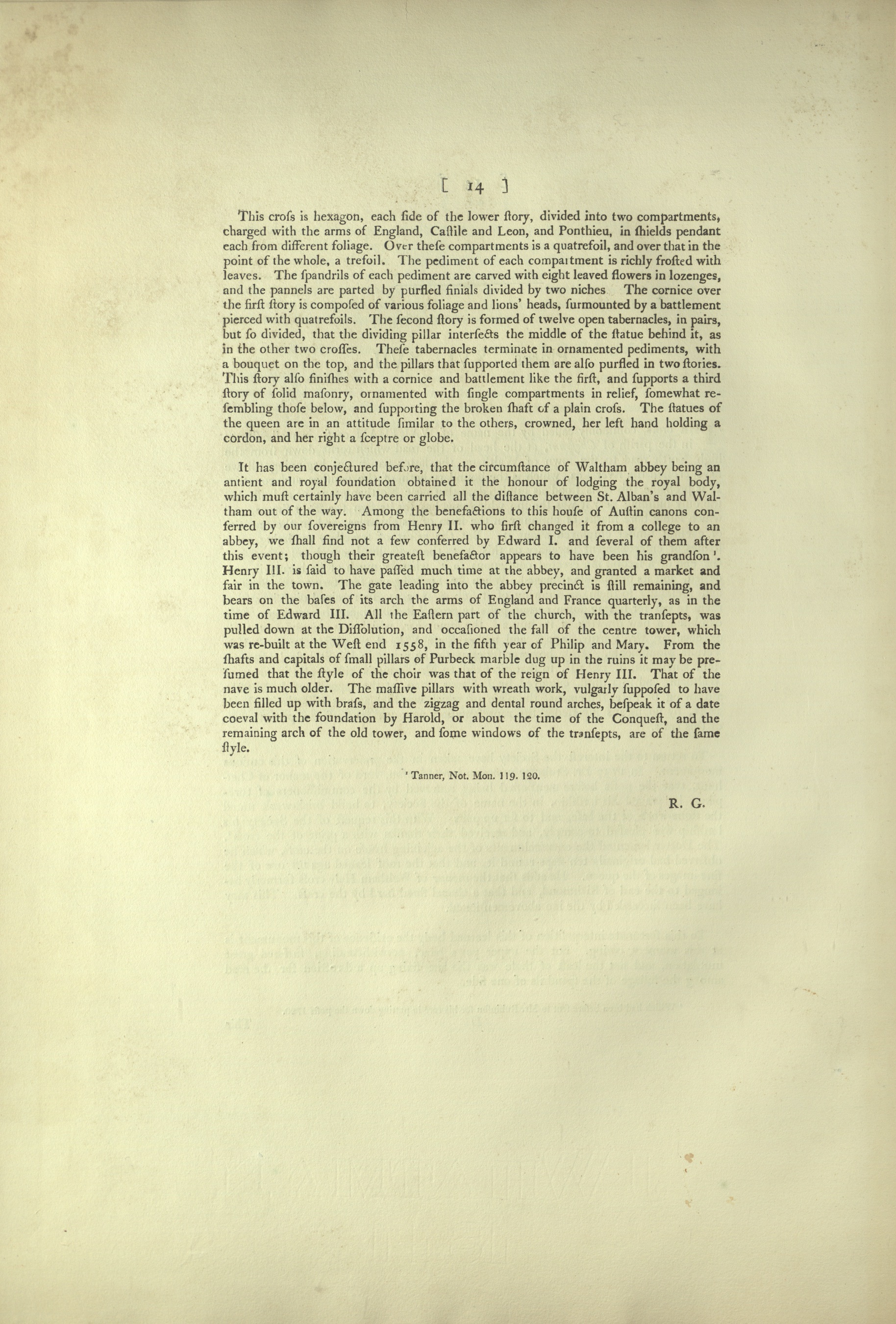
[ (Page) 14 ]
This cross is hexagon, each side of the lower story, divided into two compartments, charged with the arms of England, Castile and Leon, and Ponthieu, in shields pendant each from different foliage. Over these compartments is a quatrefoil, and over that in the point of the whole, a trefoil. The pediment of each compartment is richly frosted with leaves. The spandrils of each pediment are carved with eight leaved flowers in lozenges, and the pannels are parted by purfled finials divided by two niches[.]
Read more/less…Translations of the Longer Passages:
Page 1, lines 2-5: [to be completed]
Page 8, footnote 1: [to be completed]
Page 8, footnote 8: [to be completed]
Page 8, footnote 14: [to be completed]
Page 10, lines 3-20: [to be completed]
